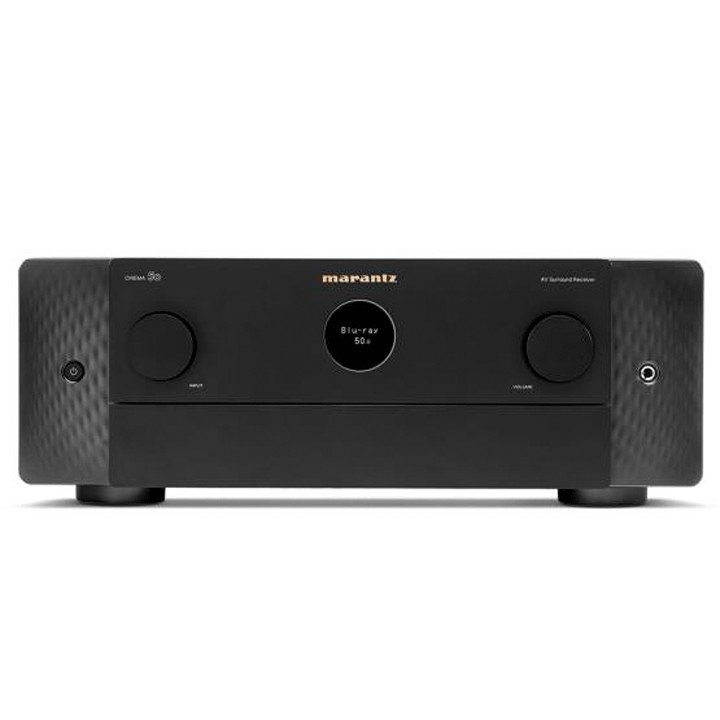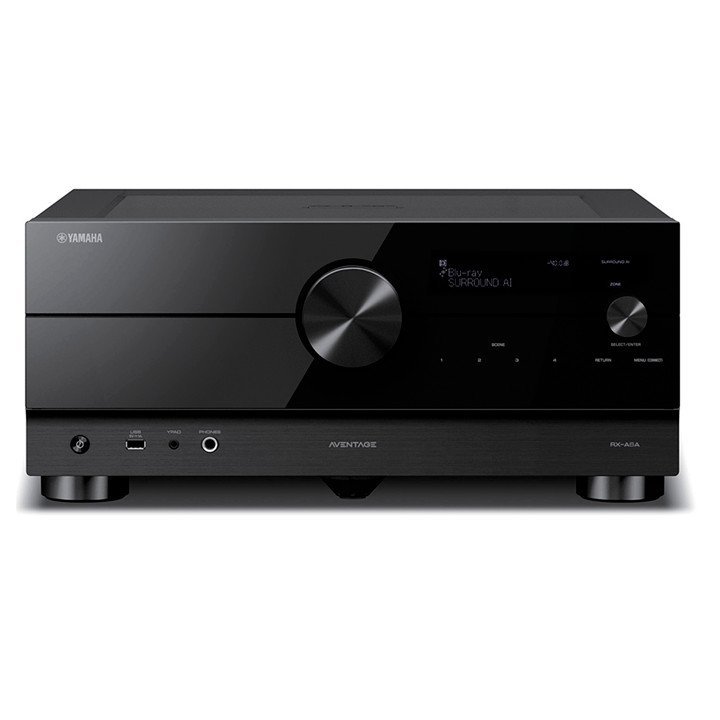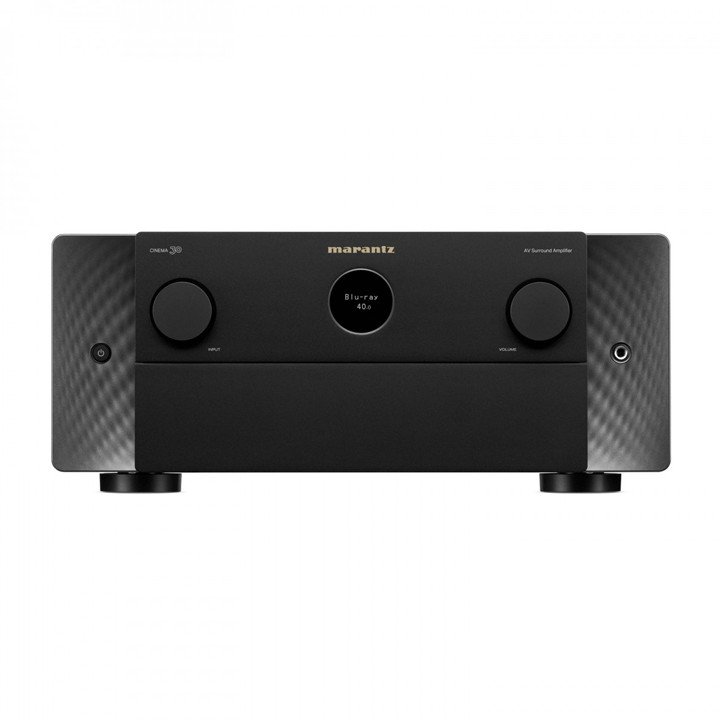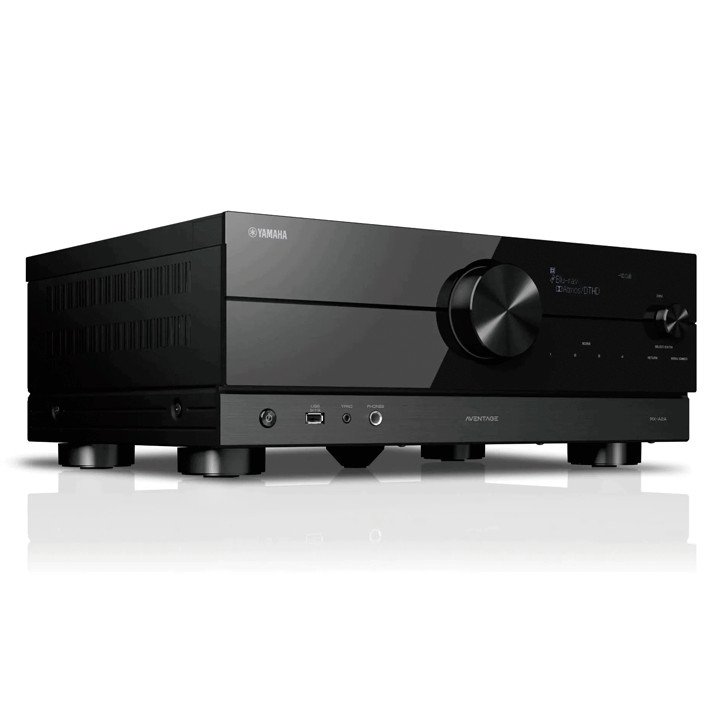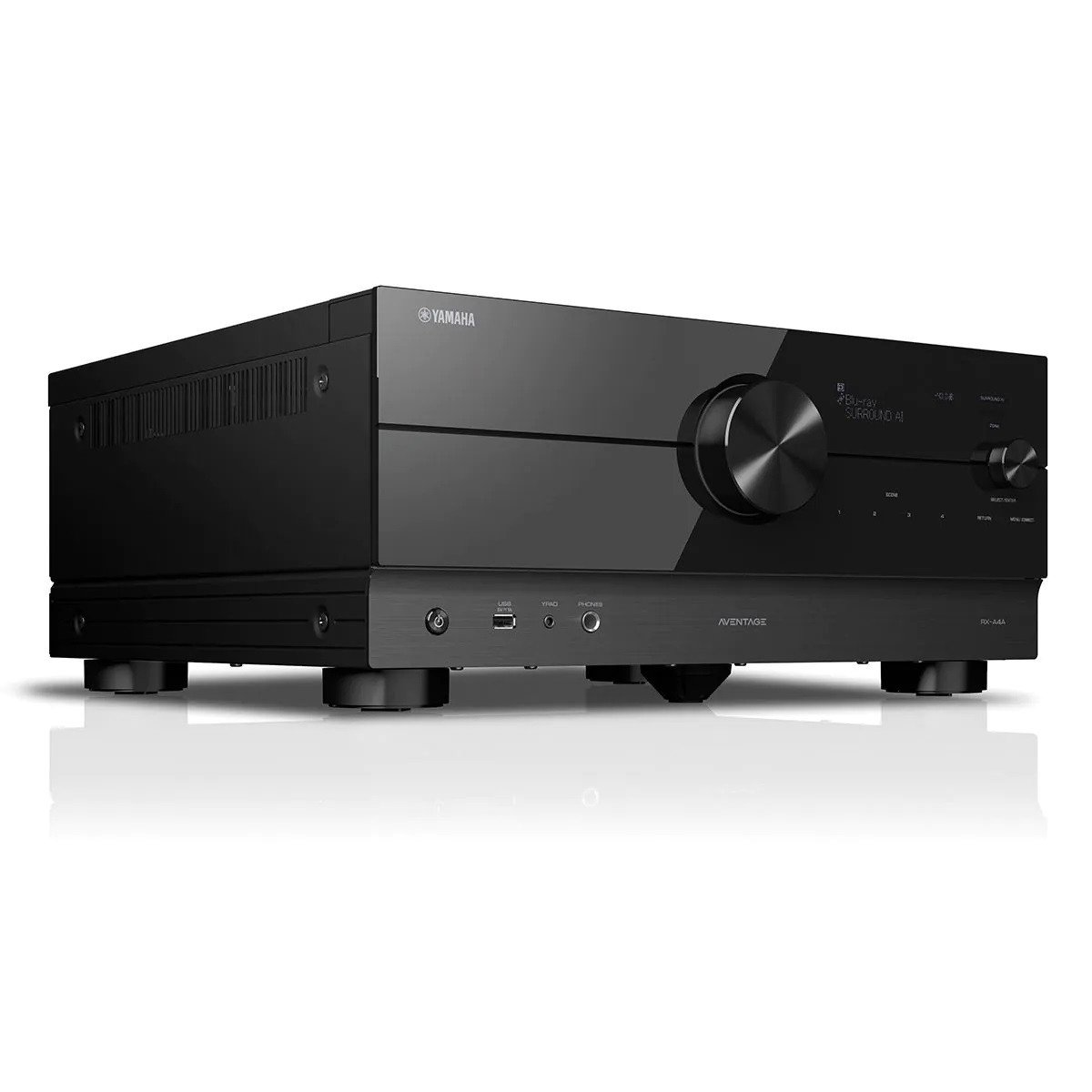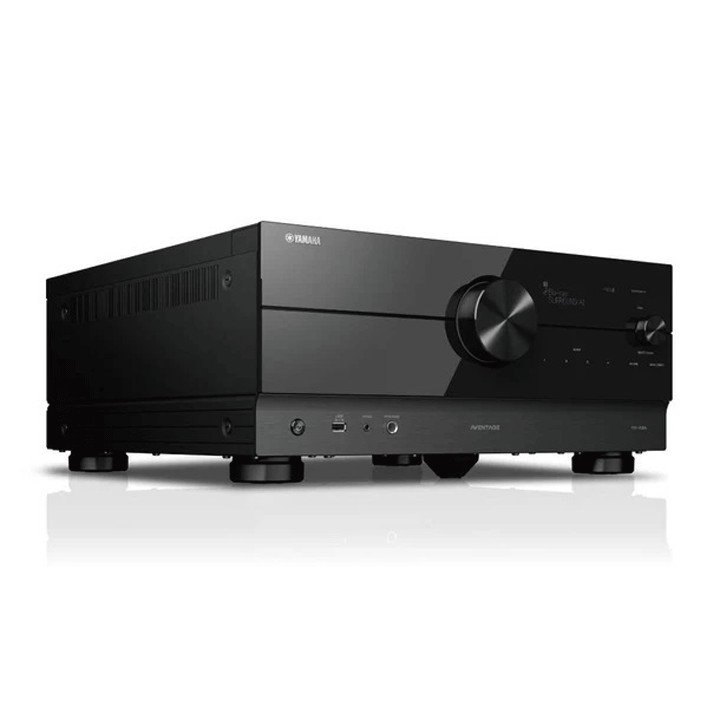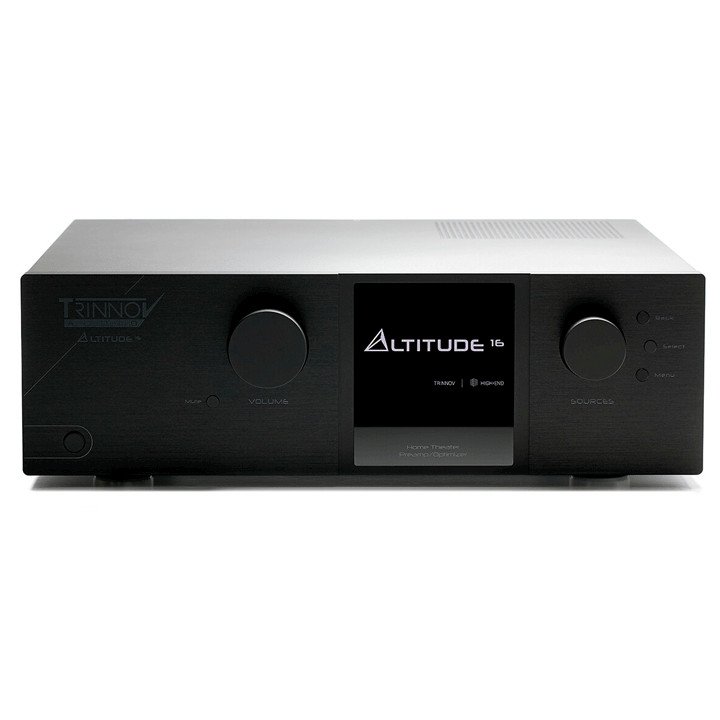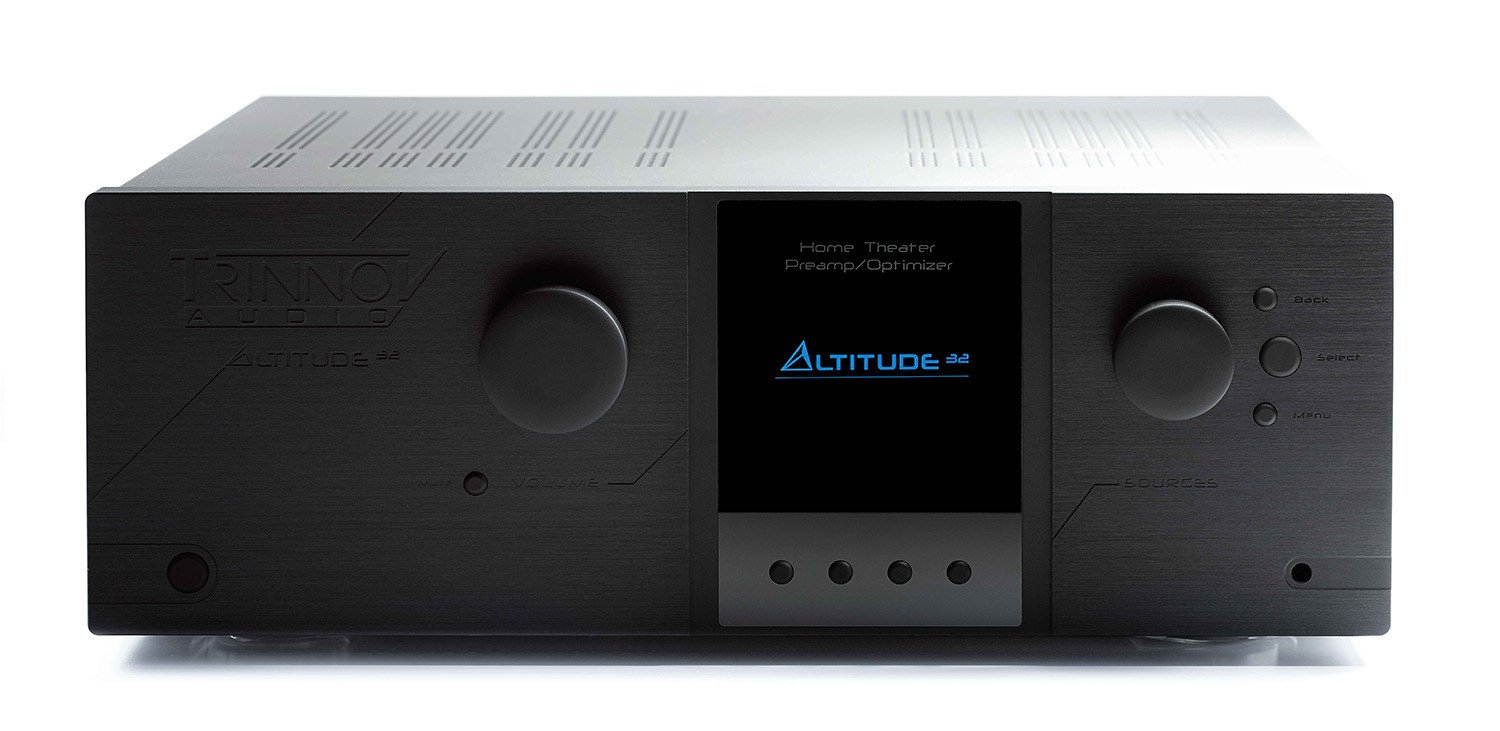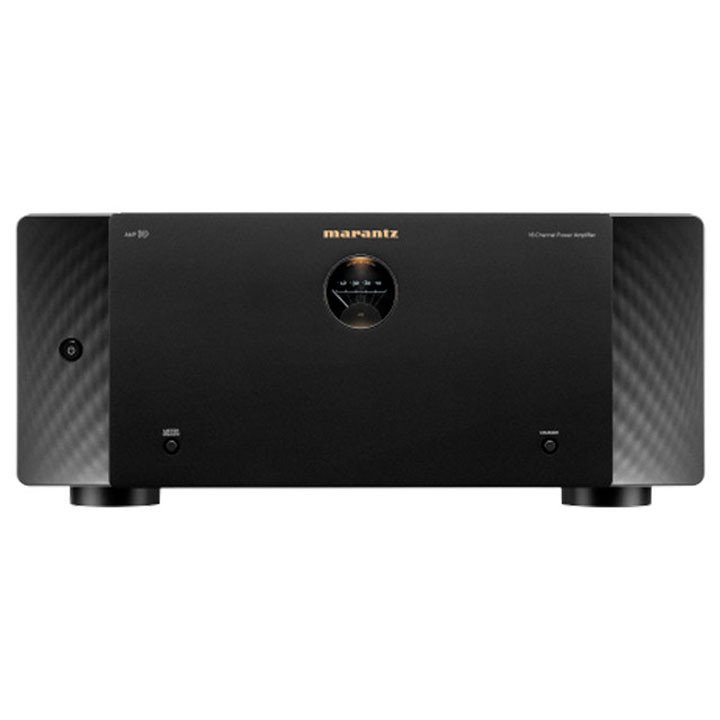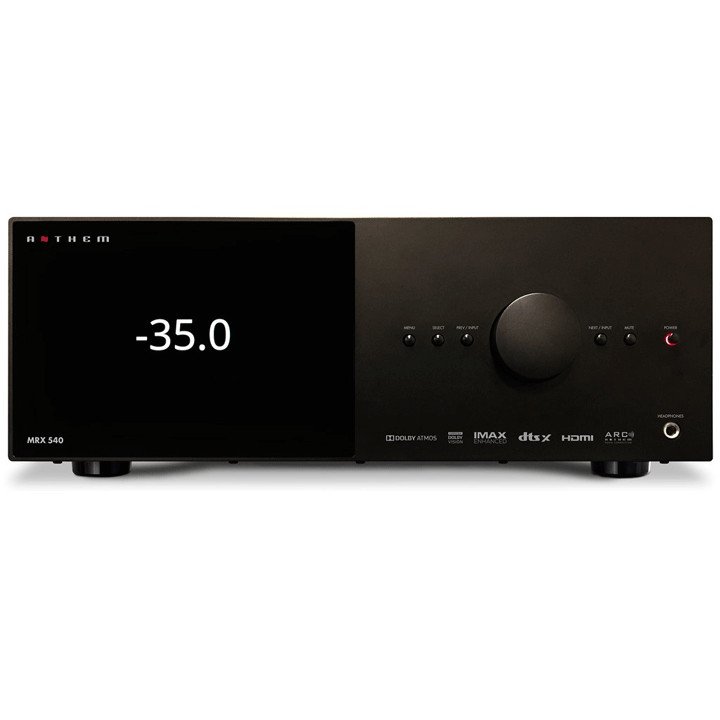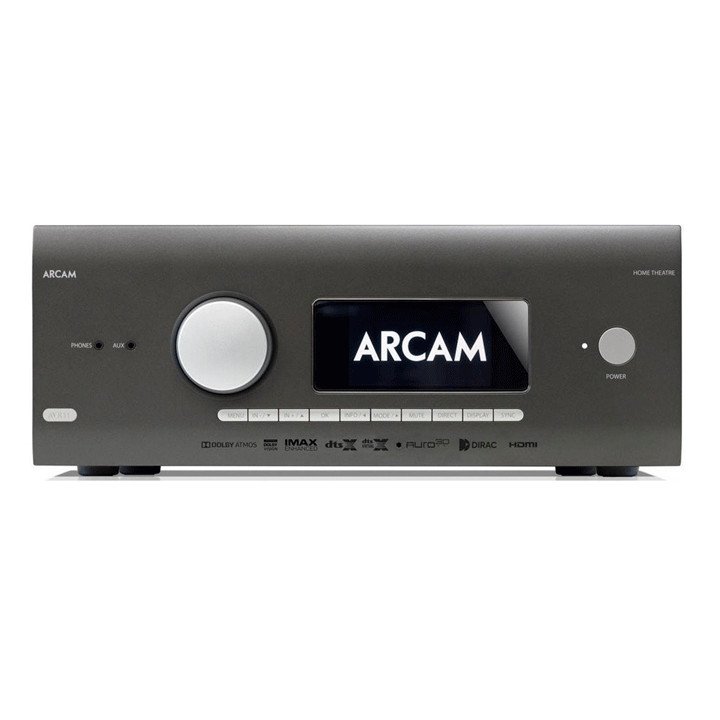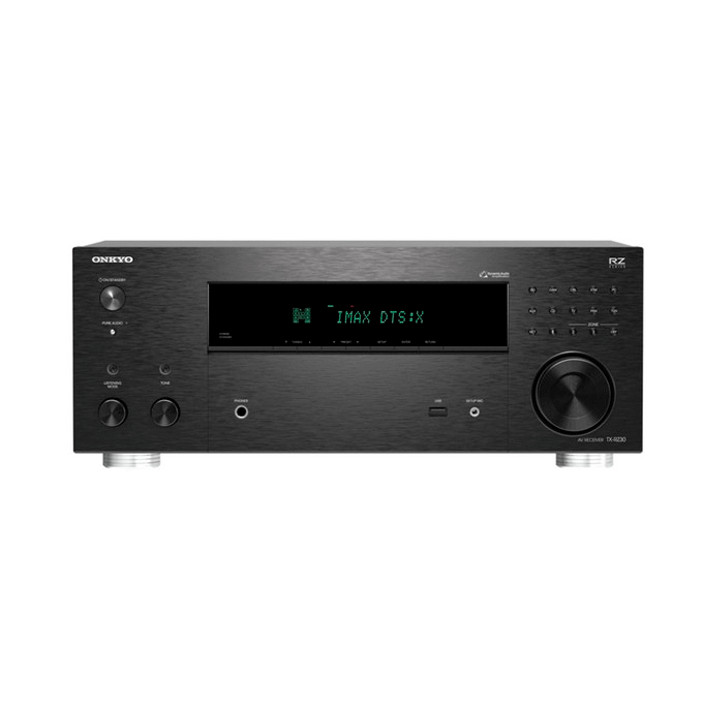AV Receivers
The Best AV receivers 2024

Best AV Receivers on the Market 2024
The AV receiver, not only powers the whole system, it’s the brains behind the whole system. The AV receiver’s job is to receive, interpret, and process the TV audio signal (via the SkyQ, Streaming Devices or Terrestrial Freeview/Freesat providers) coming into the house before sending it along to the TV and speakers.
An AV receiver is at the centre of a home cinema system, it controls and drives your home cinema. Without one, you just have a TV or Projector.
Below is key information on what an AV Receiver does in a Home Cinema.
- Connects and switches your audio sources:
Each audio source in your home cinema connects directly to your AV receiver. To enable the audio of this source, the AV Receiver changes to the source appropriate for that media. - Connect and switch your video sources:
Each of your video source devices is connected directly to the AV receiver, which is connected in turn to your TV or Projector. This is a step-change from connecting each source into the TV, as it eliminates the requirement to change the TV. - Tunes in radio programming:
Most AV Receivers include a radio tuner, with a large percentage of AV Receivers having the ability to stream Spotify or other media sources via a Bluetooth connection. Most Radio stations are Digital, which is great for the AV Receiver, as you’ll be able to play your favourite online radio station from this device. - Decodes surround-sound formats:
AV Receivers can decode analogue and digital surround-sound formats. is a feature that distinguishes an A/V receiver from a more traditional stereo receiver (the plain old stereo you’ve had around for years). - The AV Receiver Amplifies audio signals to drive multiple speakers:
Installing a Dolby Atmos, Dolby Digital, Surround Sound Home Cinema System will require an amplifier that understands speaker placement, distance from a seated position, and type of movie/content.
AV Receivers are designed with Software and Hardware that enables these devices to amplify sounds to each of the speakers.
- The user interfaces for your home cinema:
Control of the whole system can be done with a single remote control, the displays on the receiver’s face, and (in many cases) an onscreen display on your television.
Home Cinema Receivers.
You will need a home cinema AV receiver with no less than five channels and one subwoofer output to operate your home cinema. We highly recommend getting an AV receiver with Dolby Atmos onboard and seven channels at a minimum, but only if your room can support it and you plan to keep your audio system for a while. Not only will this allow you to future-proof your system, but you'll also guarantee a cinema-like audio experience at home.
A good home cinema AV receiver can perform many functions, such as:
• Correctly interpret all audio data and assign a channel to each speaker.
• Send the above to any additional wired and wireless speakers throughout the house. (A good receiver = your home’s main audio hub and/or party machine.)
• If it's wireless, it will be able to stream anything from anywhere. Your music library, your favourite streaming music stations, and so on.
• Allow your Blu-ray player to shine with stellar sound.
• Switch among multiple “sound” modes, from Dolby Cinema Surround Sound to Live Cafe to Stereo (for your music), and other modes.
Though less expensive receivers may have all the features and functions you want, they typically don't have the muscle required to do things well. Think scooters vs. motorcycles. Though both have two wheels and an engine, and both will get you across town, only one does it is breathtaking, exhilarating, hold-on-tight style.
Other options? Go with a preamp and amp.
If you have the budget, go with separate processing components. With both an amp and a preamp, you’re not relying on one unit (the AV receiver) to do both signal distribution and amplification. Instead, you have a unit (the preamp) that is designed to do distribution and a unit (the amp) that is designed to amplify.
Want something better? Add more dedicated amps! Simply said, the more power they have, the less they have to work to make it sound really good.
Most AV receivers include Dolby Atmos and DTS:X support for adding even more sound channels, with the addition of height channel speakers, or they can, of course, play vanilla 5.1 surround sound.
Expect HDMI inputs that can pass through 4K (and even 8K) and HDR video, with voice assistant support, Bluetooth wireless audio and Apple AirPlay extras on a fair number of models these days.


